Southeast
American Revolution began 249 years ago: Here are 5 overlooked tourist spots on fight for independence
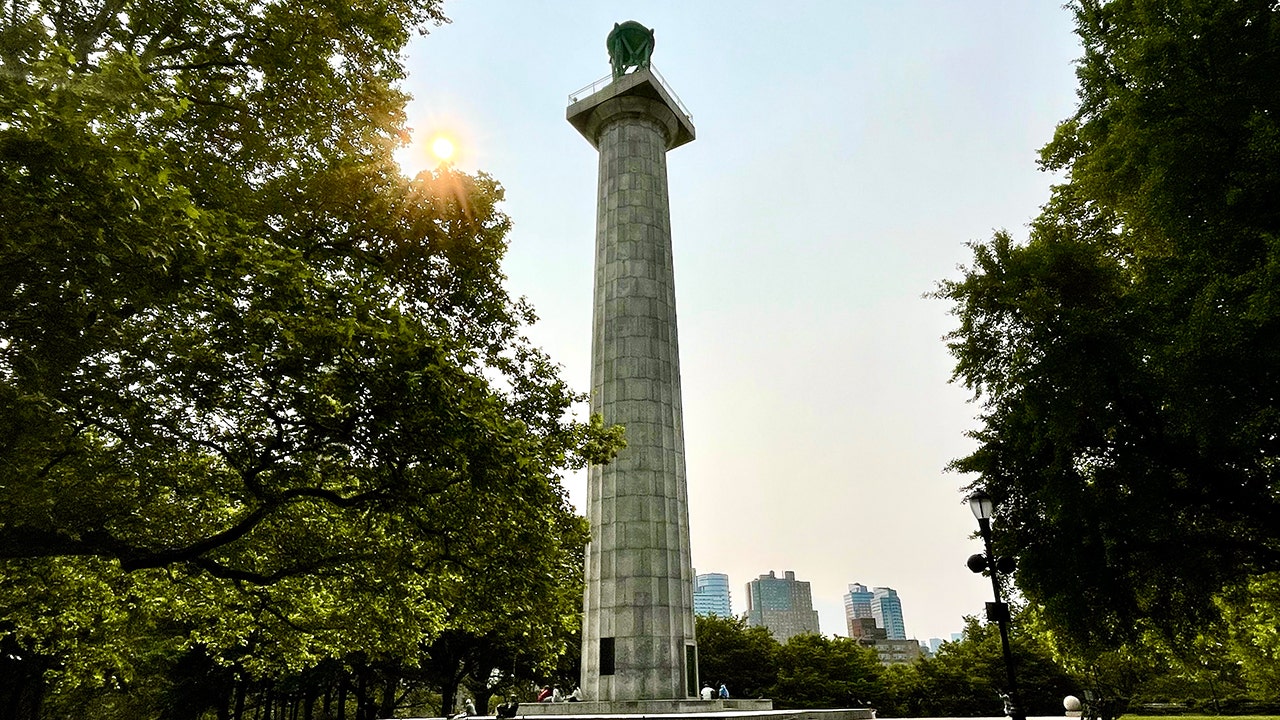
The grand events and oft-told tales of the American Revolution are easy to find among sprawling reverent battlefields and national parks.
George Washington’s Mount Vernon in Virginia, Independence Hall in Pennsylvania, and Minuteman National Historical Park in Massachusetts, where the American rebellion exploded into deadly revolution 249 years ago today, April 19, 1775, top any list of highlights in the nation’s fight for independence.
But historical secrets, haunting reminders and the lingering traces of legend help tell a complete story of any event, even one as long and deeply chronicled as the American Revolution.
MEET THE AMERICAN WHO NEVER FLINCHED IN THE FIGHT FOR INDEPENDENCE, ABIGAIL ADAMS
Here are 5 often overlooked locations that helped pave the way for American independence.
1. Bayley-Hazen Military Road, Vermont
Colonial troops invaded Quebec, Canada in the first winter of the American Revolution, with Benedict Arnold among its leaders.
Hundreds of his men died on the rough journey through the frozen New England wilderness.
A new road was needed to bring men and supplies to Canada – a mission that ultimately failed.
The Bayley Hazen Road in Vermont was conceived to deliver supplies to American troops fighting in Quebec in the American Revolution. It was never completed. Remnants of the road today offer haunting reminders of the fight for American independence. Sign in Peacham, Vermont. (Kindra Clineff/Alamy Stock Photo)
“Proposed and started in 1776 by Colonel Jacob Bayley, continued in 1779 and later abandoned by General Moses Hazen, the road — and what remains of it — extends from Wells River in a northwesterly direction to what is now known as Hazen’s Notch,” reports the website CrossVermont.org.
“Small details, historical markers, grave sites and monuments that still recall the events of long ago may escape the eye when barreling along in a car.”
The warpath carves a lane through some of the most rural parts of the Lower 48 states. It is best explored by bicycle, the website adds.
“Small details, historical markers, grave sites and monuments that still recall the events of long ago may escape the eye when barreling along in a car but will not be missed by bike.”
2. French Cemetery, Yorktown, Virginia
Fifty unknown soldiers of France who gave their lives for the cause of American liberté are buried near this Yorktown battlefield.
Among other lessons, the graves are reminders of 50 French mothers — 50 French families — who never knew the fate of their son, father or brother when he shipped overseas to fight the British in North America.
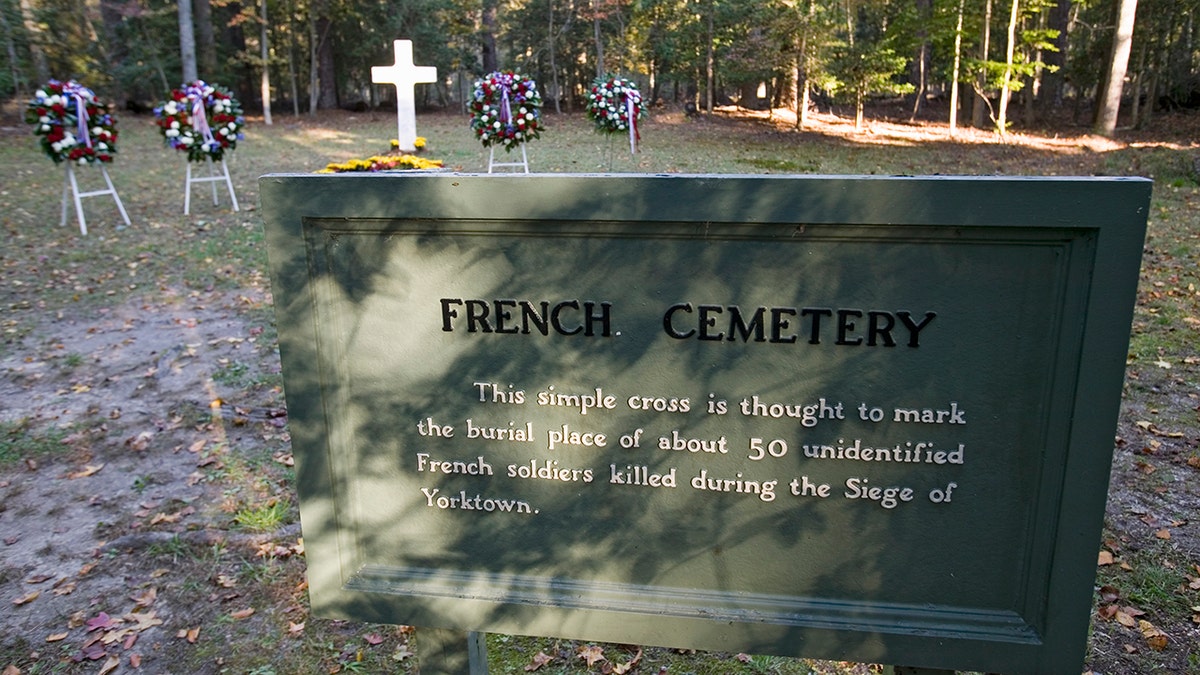
This is the French Cemetery where 50 French soldiers who lost their lives in the Siege of Yorktown, 1781, are buried. Colonial National Historical Park, Historical Triangle, Virginia. (Joe Sohm/Visions of America/Universal Images Group via Getty Images)
The 50 unknowns represent the 8,000-10,000 Frenchmen who fought at Yorktown, the final American victory in the war that forged the new United States.
Those thousands of men, supported by 29 French warships, and paired with years of American resolve, forced the British to surrender and admit defeat at Yorktown in October 1781.
COLUMBIA’S FORMER PRESIDENT DWIGHT EISENHOWER WARNED THE WORLD WOULD FORGET WWII HORRORS AGAINST JEWS
Several other historical markers are within walking distance, including those for French Artillery Park and Washington’s headquarters, and a tribute to the leading French military officer in Virginia, Comte de Rochambeau.
3. Nathan Hale execution site, Manhattan, New York
“I only regret that I have but one life to lose for my country,” Hale, just 21, reportedly uttered with stiff lip as he was hanged by the British for treason on Sept. 22, 1776 in Manhattan.
Dense urban development paved over the actual site of Hale’s death, but a bronze plaque visible from the sidewalk offers the only reminder of this seminal moment in patriotic defiance.
It’s located on Third Avenue, between East 65th and East 66th Streets, on the Upper East Side.
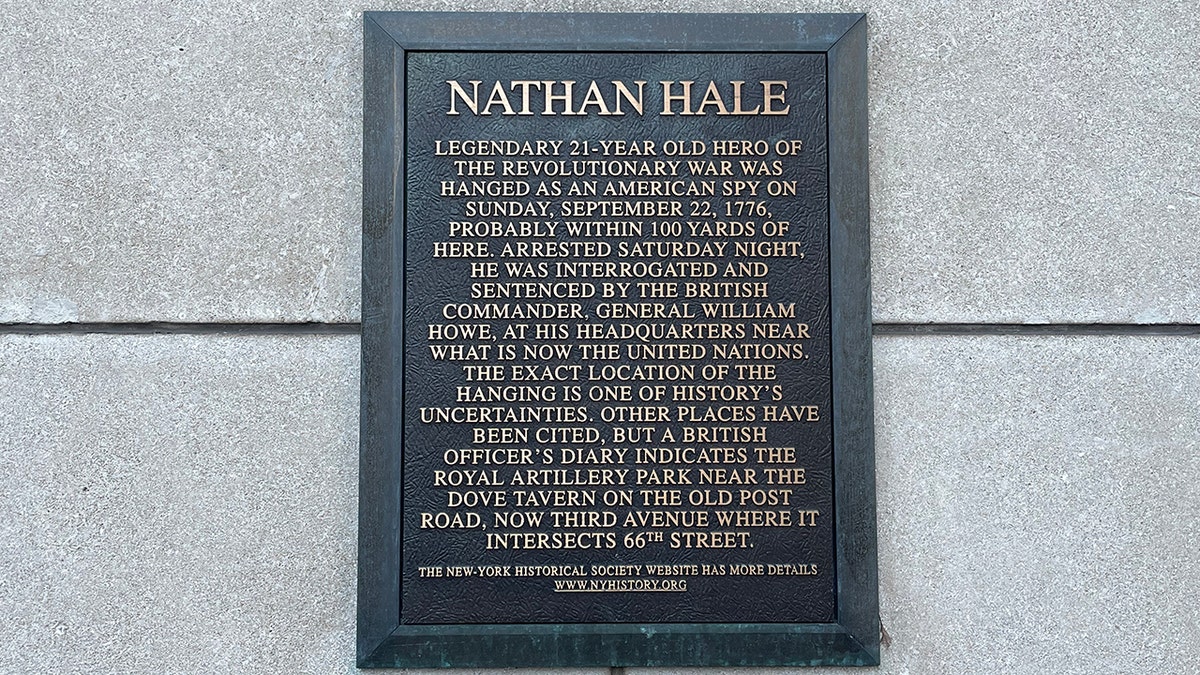
American patriot Nathan Hale reportedly uttered, “I only regret that I have but one life to lose for my country,” before the captured spy was hanged by the British on Sept. 22, 1776 in Manhattan. (Kerry J. Byrne/Fox News Digital)
Little more than a photo-op stop, it offers an opportunity to explore some of the other interesting Revolutionary War sites in Manhattan — which was occupied by the British throughout most of the war.
Those interesting sites include the Alexander Hamilton Grange, a farmhouse in the middle of the city’s concrete caverns that the Founding Father built just before he was killed in a duel with Vice President Aaron Burr.
“I only regret that I have but one life to lose for my country.”
Also, Fraunces Tavern is where George Washington delivered his farewell speech to his officers after the British final left New York City.
ON THIS DAY IN HISTORY, DECEMBER 4, 1783, WASHINGTON BIDS FAREWELL TO HIS TROOPS AT FRAUNCES TAVERN IN NYC
It’s a real tavern today that doubles as a museum of early American history.
4. Prison Ship Martyrs Monument, Brooklyn, New York
This powerful monument in a verdant park offers chilling testimony that American independence was purchased by patriots at the price of hideous human suffering.
The 150-foot-tall Doric column at Fort Greene Park towers over the footprint of a colonial garrison of the American Revolution.
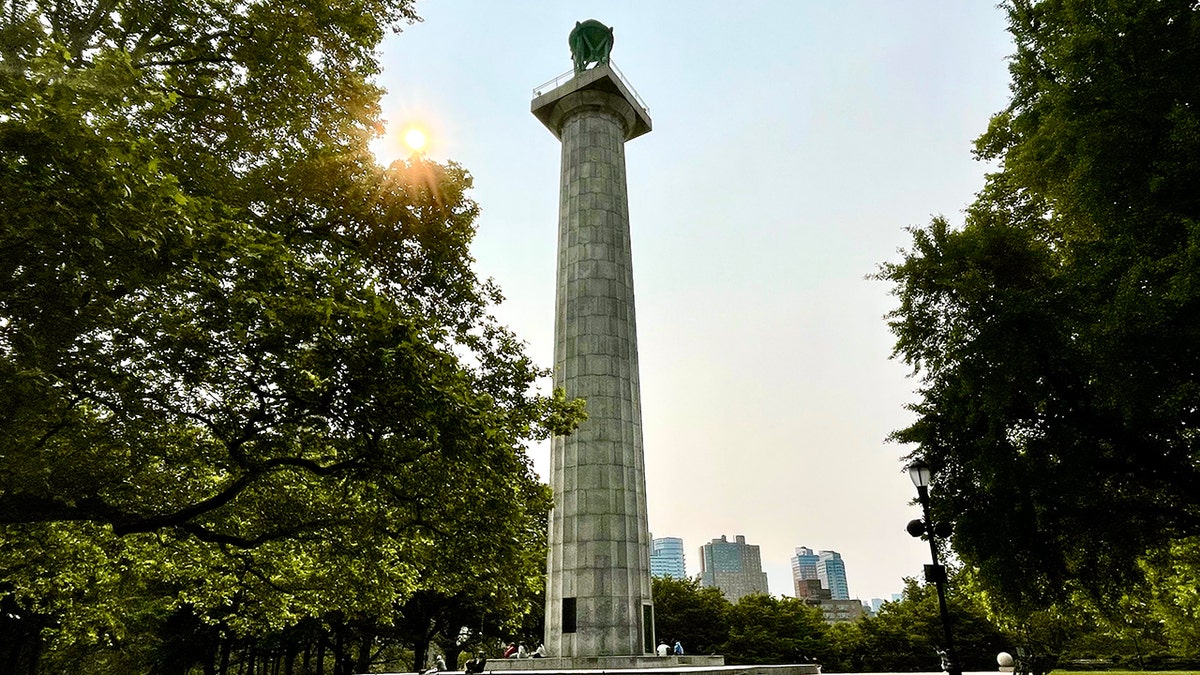
The Prison Ship Martyrs Monument in Brooklyn was dedicated on Nov. 14, 1908 in a ceremony attended by President William Howard Taft. (Kerry J. Byrne/Fox News Digital)
It’s dedicated to the estimated 11,500 American soldiers, sailors and privateers who died in hellish conditions aboard British prison ships on the nearby East River during the fight for nationhood.
A number of these patriots are buried in a crypt beneath the monument — the identities of many known only to God.
MEET THE AMERICAN WHO ROWED WASHINGTON ACROSS THE DELAWARE ON CHRISTMAS: SAILOR-SOLDIER JOHN GLOVER
“This is hallowed ground,” Brooklyn native and self-professed patriot Eddie Desmond told Fox News Digital.
“This is America’s original tomb of the unknown soldiers.”
5. Swamp Fox statue/Marion County Museum
Francis Marion, the legendary “Swamp Fox” of South Carolina, has fueled legend and tributes for nearly 250 years.
Most notably in recent times, he’s among the inspirations for the movie “The Patriot.” Mel Gibson plays the role of a colonial American father who fights the British from the misty swamps of the American south.
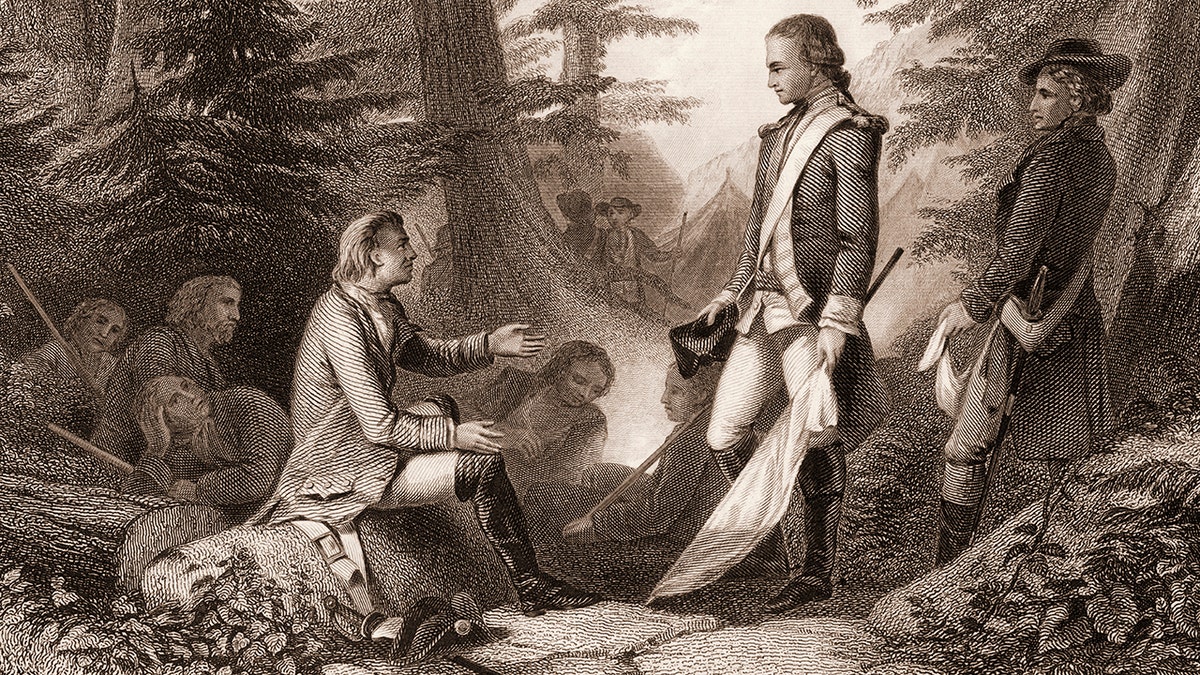
Illustration of Francis Marion (1730s-1795), an American military officer nicknamed the Swamp Fox, seated, greets a British officer, mid-to-late 18th century. (Stock Montage/Getty Images)
“Using tactics he learned from the Cherokee during his time as a soldier in the French and Indian War 20 years prior, Marion and his men outwitted countless British troops right from the swamps along the Pee Dee and Santee Rivers,” reports the website of the Pee Dee Tourism Commission.
The best place to get a picture of the man behind the legend is at the museum of the South Carolina county that bears his name.
The Marion County Museum includes a permanent exhibit of the Swamp Fox, while the highlight of a visit for many is a photo with the nearby larger-than-life statue of the American war hero.
For more Lifestyle articles, visit www.foxnews.com/lifestyle.
Read the full article from Here

Southeast
On Juneteenth, Alabama's new National Monument to Freedom dedicated to those who endured slavery
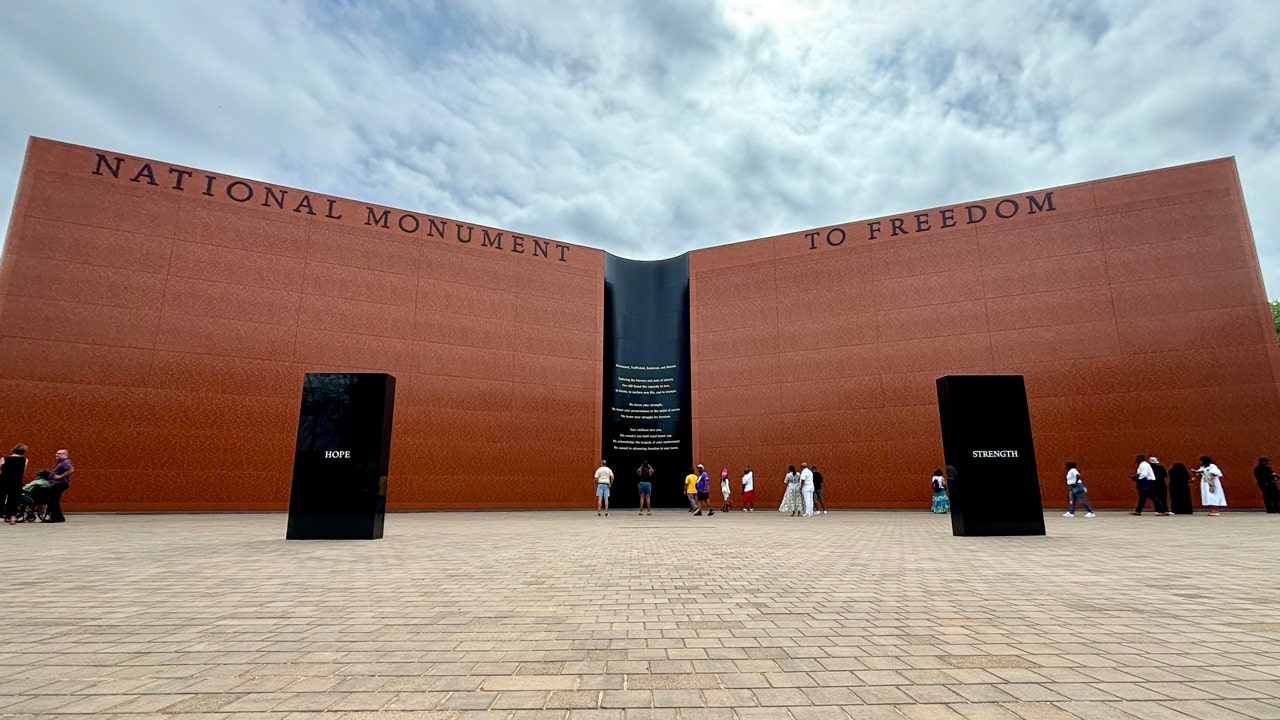
- The Equal Justice Initiative, a criminal justice reform nonprofit, dedicated its National Monument to Freedom on June 19, 2024, in the new Freedom Monument Sculpture Park in Montgomery, Alabama.
- The National Monument to Freedom stands four stories tall. It is inscribed with 122,000 surnames that formerly enslaved people chose for themselves, according to the 1870 Census, after being emancipated at the end of the Civil War. Those last names represent the more than 4 million enslaved people who were emancipated.
- The Equal Justice Initiative invoked Juneteenth in its dedication. Juneteenth is a holiday celebrating the end of slavery. More specifically, it commemorates June 19, 1865, the day enslaved people in Galveston, Texas, found out they were free two months after the Civil War.
Thousands of surnames grace the towering monument, representing the more than 4 million enslaved people who were freed after the Civil War.
The Equal Justice Initiative, a criminal justice reform nonprofit, invoked the Juneteenth holiday — the day that commemorates the end of slavery in the U.S. — on Wednesday as it dedicated its National Monument to Freedom.
The monument, which honors the people who endured and survived slavery, is the centerpiece of the new Freedom Monument Sculpture Park in Montgomery, Alabama, where art and historical artifacts tell the story of enslaved people in the United States.
JUNETEENTH IS A CELEBRATION OF ETHNIC HARMONY
During the dedication ceremony, Equal Justice Initiative founder Bryan Stevenson recounted how enslaved people endured unspeakable horrors, but also left a legacy of perseverance and strength.
“Enslaved people in this country did something remarkable that we need to acknowledge, that we need to recognize and that we need to celebrate. Enslaved people resisted. Enslaved people were resilient. Enslaved people found ways to make a way,” Stevenson said.
Juneteenth is a day to confront the brutality of slavery and its impact, but he said it is also a day to celebrate the dignity and strength of people who managed to love and survive despite what they faced.
Visitors arrive at the National Monument to Freedom on June 19, 2024, in Montgomery, Alabama. The monument is inscribed with 122,000 surnames that formerly enslaved people chose for themselves, as documented in the 1870 Census, after being emancipated at the end of the Civil War. (AP Photo/Kim Chandler)
“They never stopped believing. The never stopped yearning for freedom. This morning, as we leave here this Juneteenth morning, I hope we will be hopeful,” Stevenson said.
Juneteenth commemorates June 19, 1865, the day enslaved people in Galveston, Texas, found out they were free after the Civil War. The news came two months after the end of the Civil War and about 2 1/2 years after the Emancipation Proclamation.
Stretching four stories into the sky, the National Monument to Freedom is inscribed with 122,000 surnames that formerly enslaved people chose for themselves, as documented in the 1870 Census, after being emancipated at the Civil War’s end. Those last names represent the more than 4 million enslaved people who were set free after emancipation.
The Equal Justice Initiative created the park to tell the story of enslaved people with honesty. The sculpture park is the third site created by the organization. The first two sites — the National Memorial for Peace and Justice, a memorial to people slain in racial terror killings; and The Legacy Museum: From Enslavement to Mass Incarceration — opened in 2018.
Dr. Michele R. Williams and her mother, Barbara Y. Williams, scanned the rows of names on Wednesday morning, looking for their family surname, Murdough.
“There’s a story connected to every single name and the families that they represent,” Michele Williams said. Their ancestor, a man named Moses, is believed to have lived in one of the two slave cabins that were taken from an Alabama plantation to become an exhibit at the sculpture park.
“It was just heart-wrenching, but also super-moving,” Michele Williams said of seeing the cabin.
Read the full article from Here
Southeast
MLB at Rickwood Field: What to know about Giants-Cardinals game at historic landmark
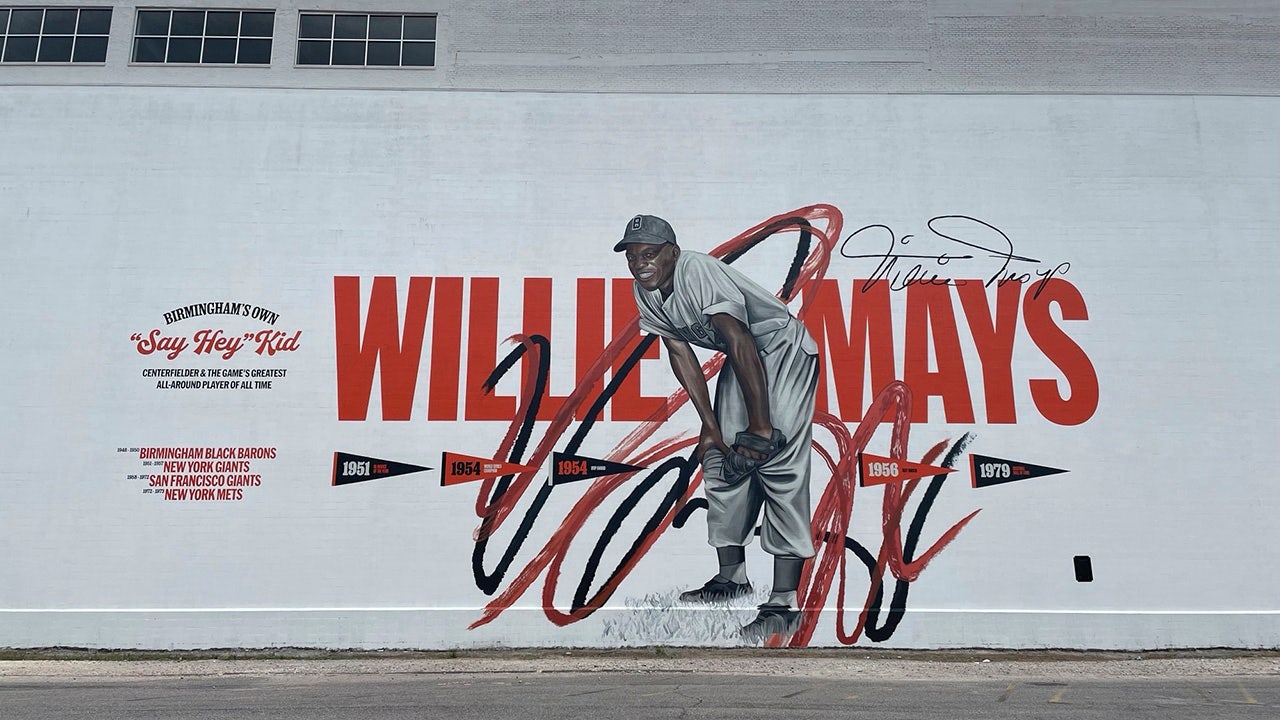
Rickwood Field, the oldest professional ballpark in the United States, will be the host of an MLB game between the St. Louis Cardinals and San Francisco Giants on Thursday night.
The stadium, which opened in 1910, is located in Birmingham, Alabama, and is on the U.S. National Register of Historic Places.
Painted flags of the Rickwood Field Championships are seen on Monday, June 10, 2024 in Birmingham, Alabama. (AP Photo/Brynn Anderson)
It was the host for the Negro Leagues’ Birmingham Black Barons, as well as the minor leagues’ Birmingham Barons and Birmingham A’s. The Philadelphia Phillies and Pittsburgh Pirates used the ballpark as a spring training site in the early 1900s.
Baseball Hall of Famers Ty Cobb and Honus Wagner were among the legends who came through. However, for many, fans got to see the talent of the Negro Leagues, including Willie Mays, who got his start with the Black Barons at the age of 17.
HOW MLB’S RICKWOOD FIELD GAME WILL MAKE HUGE STATEMENT IN COMMUNITY — AND BASEBALL
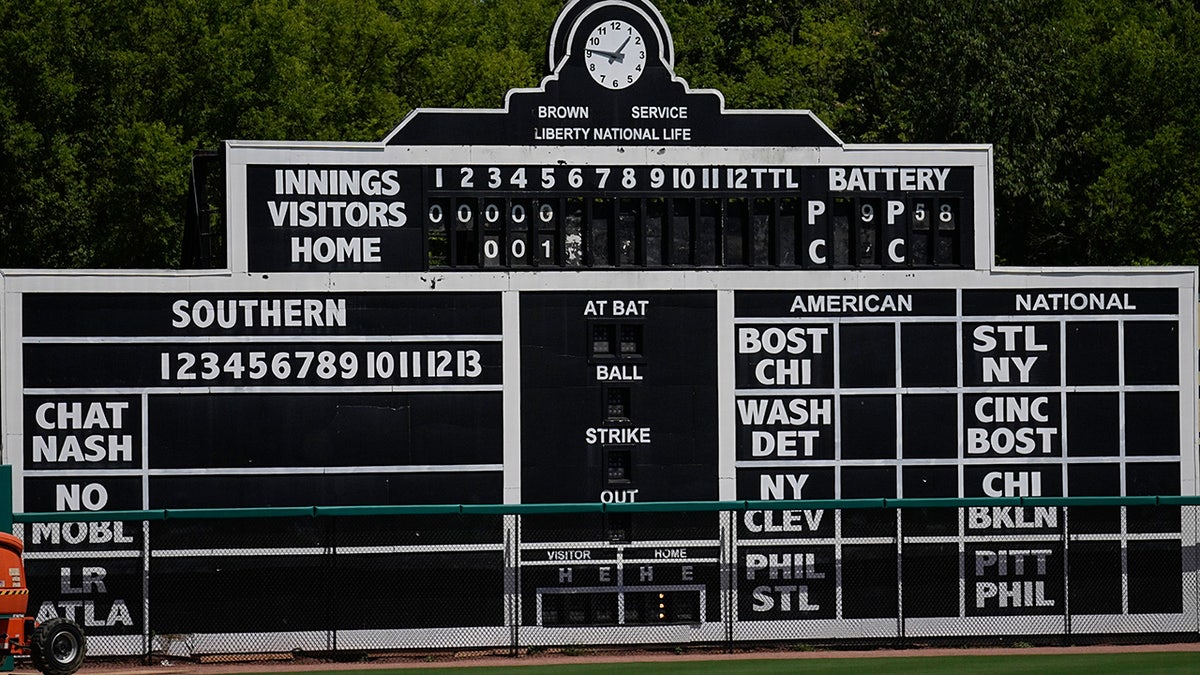
A manual scoreboard is seen at Rickwood Field on Monday, June 10, 2024 in Birmingham, Alabama. (AP Photo/Brynn Anderson)
Mays, who passed away this week at 93, told the San Francisco Chronicle that playing in the majors was not something he thought he could attain – at least not until Jackie Robinson first broke the color barrier in baseball, and Larry Doby followed him in the American League.
Mays got his start with the New York Giants in 1951 and was the Rookie of the Year.
“The majors? I didn’t dream about the impossible,” he told the paper before his death. “I was taught to see your goal in your mind and work toward it. I could work toward getting to Rickwood Field and the Birmingham Black Barons. I didn’t need to dream for that. For that, I needed to work hard. So, I did. Rickwood became my training ground.”
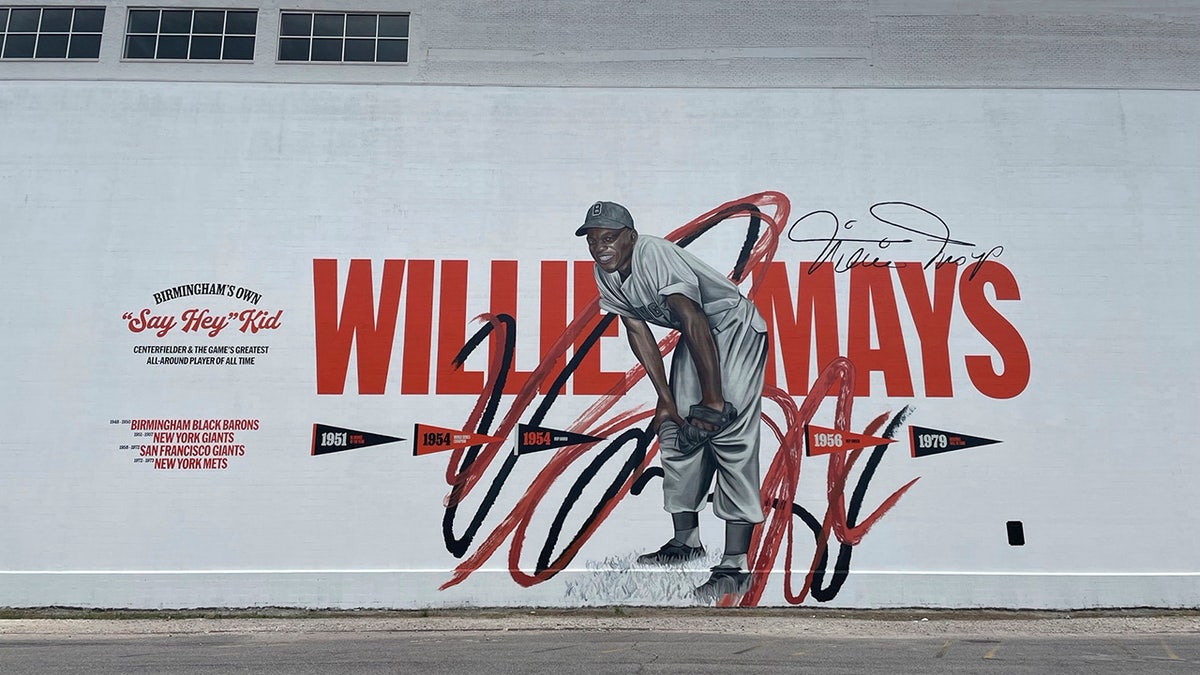
A Willie Mays mural is shown in downtown Birmingham, Alabama, on Wednesday, June 19, 2024. The mural was created by artist Chuck Styles and celebrates Mays’ contributions to baseball, honoring the longtime Giants center fielder who died. (AP Photo/Alanis Thames)
Thursday night’s game was set to honor Mays, who before his death announced he could not make the trip to Alabama.
“All of Major League Baseball is in mourning today as we are gathered at the very ballpark where a career and a legacy like no other began,” MLB Commissioner Rob Manfred said in a statement. “Willie Mays took his all-around brilliance from the Birmingham Black Barons of the Negro American League to the historic Giants franchise. From coast to coast in New York and San Francisco, Willie inspired generations of players and fans as the game grew and truly earned its place as our National Pastime.”
HOW MLB AT RICKWOOD FIELD WILL ‘GIVE THE NEGRO LEAGUES THEIR FLOWERS’
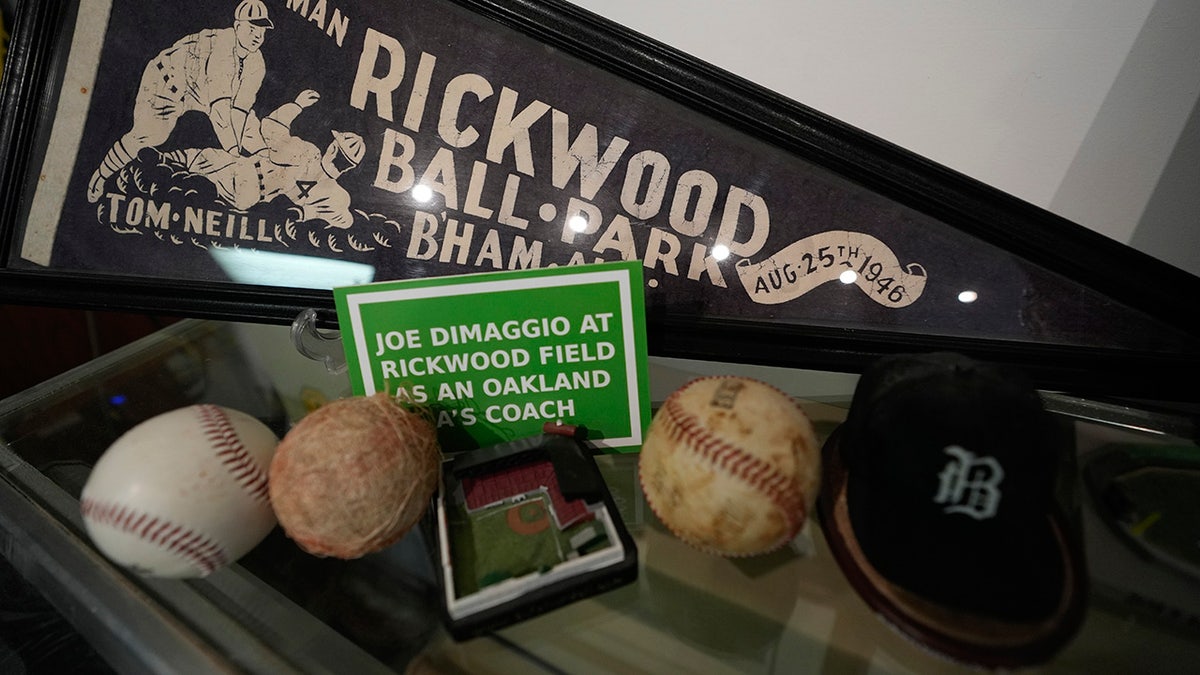
Baseball memorabilia is on display in a shop near Rickwood Field on Monday, June 10, 2024 in Birmingham, Alabama. (AP Photo/Brynn Anderson)
Rickwood Field was also noted for its play in American Civil Rights history.
It was one of the sites of marches for voting rights and boycotts, but on the end, brutal beatings, civil unrest and bombings.
“It was a place where horror was allowed to take a pause for nine innings,” comedian Roy Wood Jr. told The Associated Press. “… Rickwood was never going to solve Black people’s problems, but it represented a place where Black people didn’t have to think about them for a few hours.”
Rickwood’s head groundskeeper, Jabreil Weir, helped MLB get the facility ready to host a game.
Some of the renovations included a new drainage system and backstop netting.
“Who would have thought MLB would come to Birmingham, Alabama?” Weir told The Associated Press. “Who ever thought that I would be in the position that I am to be a part of this event? These are moments that you dream of.”
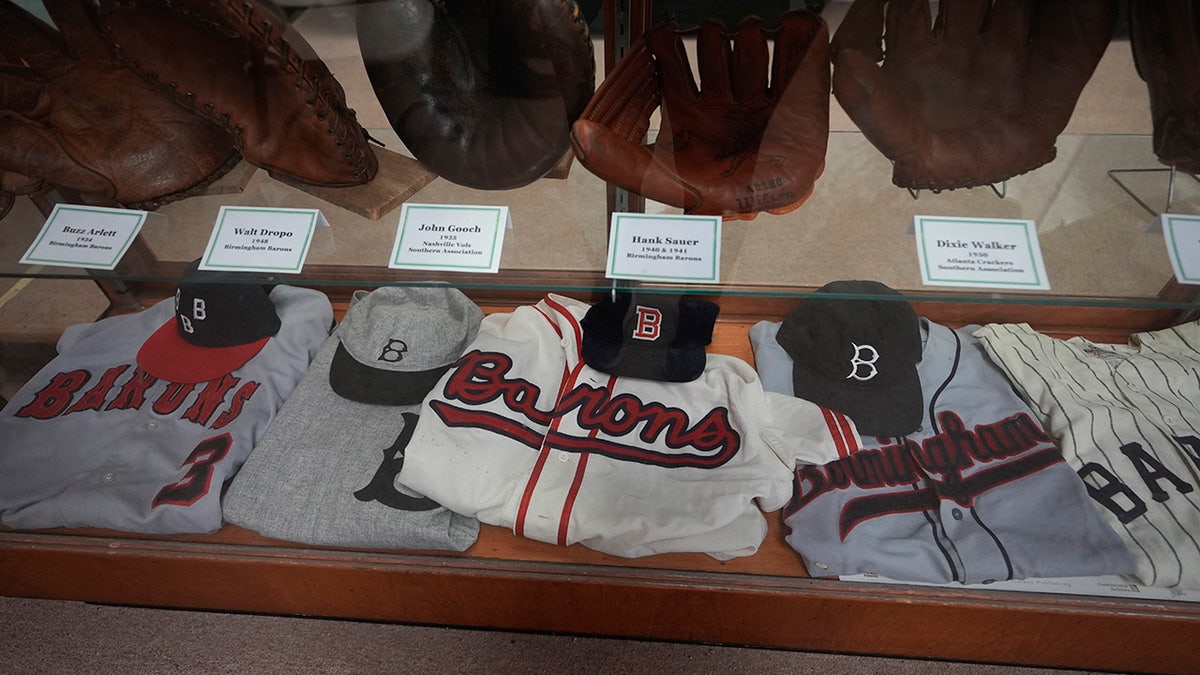
Former uniforms of the Birmingham Barons baseball team and gloves are on display in a shop near Rickwood Field on Monday, June 10, 2024 in Birmingham, Alabama. (AP Photo/Brynn Anderson)
Game info
Matchup: St. Louis Cardinals vs. San Francisco Giants.
Time: 7:15 p.m. ET/6:15 p.m. CT
Place: Rickwood Field, Birmingham, Alabama
TV: FOX
The Associated Press contributed to this report.
Follow Fox News Digital’s sports coverage on X and subscribe to the Fox News Sports Huddle newsletter.
Read the full article from Here
Southeast
Florida and other states that have signed bills to protect homeowners against squatters
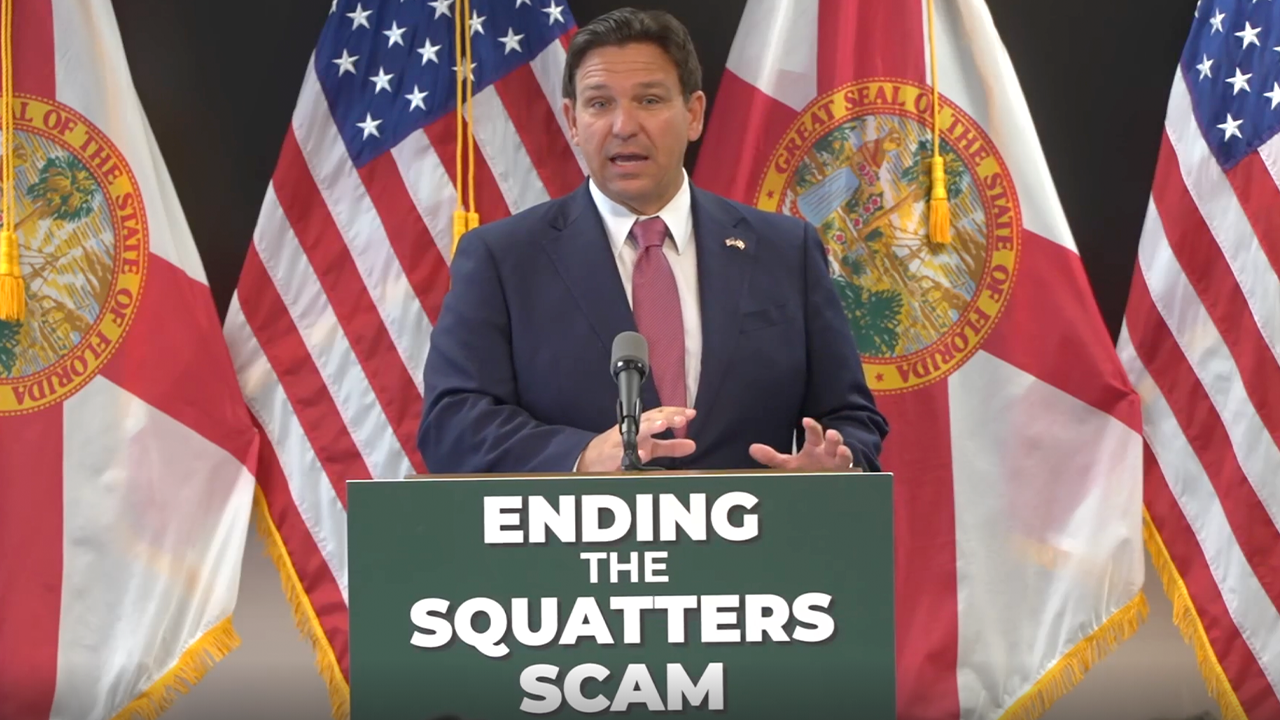
Every state has taken a different approach to dealing with squatters unlawfully living in resident’s homes.
Squatters often cause extensive damage to the properties they reside on, an expense that commonly falls on the shoulders of the homeowner.
Many states have laws in place that tend to favor squatters in these situations by putting homeowners through lengthy and costly legal battles in order to get the squatters removed from the property.
States around the country, like Florida, have begun to pass bills protecting homeowners against squatters. (Gov. Ron DeSantis/FB)
6 WAYS HOMEOWNERS AND LANDLORDS CAN PROTECT THEMSELVES AGAINST SQUATTERS
There are certain states throughout the country which have signed bills that put the rights in the hands of homeowners by helping them remove unlawful residents from their property quickly.
States, like Pennsylvania, for example, have introduced proposals to protect homeowners. In Pennsylvania, Donna Scheuren, who represents the Pennsylvania House of Representatives’ 147th district, introduced the Homeowner Protection and Squatter Eviction Act in April, saying she was inspired by Florida’s legislation to do so.
In Texas, a relator previously told Fox News Digital that he spoke at a May Senate hearing in Austin to talk about the squatter situations he has dealt with over the years. He told Fox News Digital in an email that the state seems serious about creating laws to make the process of dealing with squatters easier for homeowners.
Below are three states that have taken strong stances on squatting by passing legislation to protect homeowners.
- Florida
- Georgia
- Alabama
1. Florida
Gov. Ron DeSantis signed a bill in March 2024 that eliminated squatters’ rights in the state of Florida.
“You are not going to be able to commandeer somebody’s private property and expect to get away with it. We are in the state of Florida ending the squatter scam once and for all,” DeSantis said during a press conference on the signing in Orlando.
FLORIDA SHERIFF WARNS SQUATTERS HE WILL BE THEIR ‘WORST ENEMY’ AND HAS A PLACE FOR THEM IN JAIL
Under the law that will go into effect on July 1, property owners will be able to immediately request the assistance of law enforcement to remove a squatter from their property if the individual is not a current or former tenent in a legal dispute and has unlawfully entered and remained once they are asked to leave by the owner.
There are harsh penalties for squatters under this law, which include a first-degree misdemeanor if an individual provides false documentation to prove their residency and a second-degree felony for those who occupy or trespass in a residential property and cause $1,000 or more in damages intentionally.

Florida Gov. Ron DeSantis signed a bill in March that helps residents to remove squatters quickly from their property. (Paul Hennessy/SOPA Images/LightRocket via Getty Images)
Before this law was passed in Florida, property owners would have to go through long legal battles in order to remove squatters from their homes. This is how the process remains in many U.S. states.
The squatter stories that came straight from those living in the state of Florida helped the bill get passed.
One example is Patti Peeples, a Florida resident who found herself a victim to a squatter situation. After squatters took over her property, it took 36 days for them to be evicted, and thousands of dollars of damage was left behind.
Sharing her story led her to provide powerful testimony before the Florida Senate and House committees while the bill was still under consideration.
Her testimony contributed to the ultimate passing of the Florida bill.
ANTI-SQUATTING ‘PROFESSIONAL’ CELEBRATES FLORIDA BAN, AS OTHER STATE LAWS FRUSTRATE HOMEOWNERS
“I certainly would have never anticipated that my personal experience would have motivated a state law change and, in fact, movement around the United States, with regard to criminal charges against squatters,” Peeples previously told Fox News Digital in a phone interview.
“I’m amazed, surprised, and really, really encouraged that this particular case of mine showed me and I hope shows others that our legislatures can listen to everyday citizens and sometimes actually seek to efficiently make new laws to address common everyday problems.”
2. Georgia
Georgia is another state that has passed a bill to protect homeowners against squatters.
The Georgia Squatter Reform Act was signed by Gov. Brian Kemp at the end of April.
This bill speeds up the eviction process and increases the penalties for those who squat in homes.
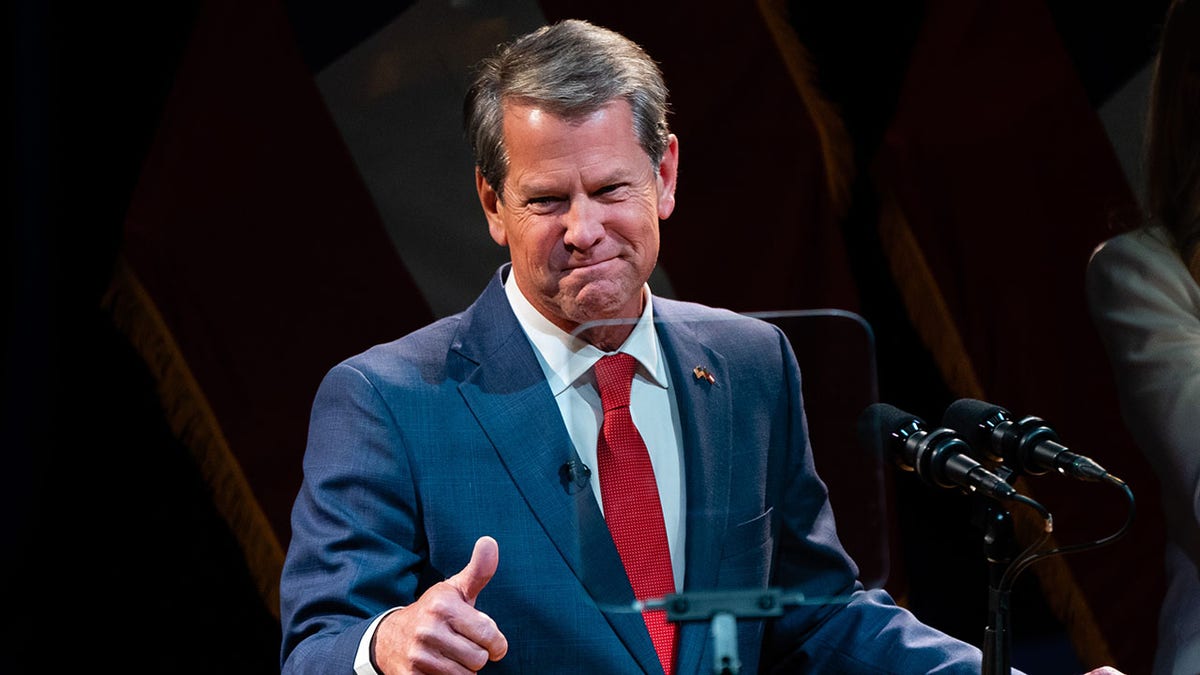
The Georgia Squatter Reform Act was signed by Gov. Brian Kemp at the end of April. (Elijah Nouvelage/Bloomberg via Getty Images)
“Unfortunately, bad actors have figured out ways to take advantage of this, exploit, really the process that goes through the local government. So we’re passing legislation that I’m going to sign right after this interview to stiffen the penalties, to go after these folks, to also speed up the eviction process. But, also, allow the property owner to go after these squatters for damages,” Kemp said on “Fox & Friends.”
GEORGIA POLICE REMOVE SQUATTERS ALLEGEDLY OCCUPYING HOME SINCE CHRISTMAS
“This is insanity, that people just think they can come in and take over somebody’s home. I mean it’s just outrageous,” Kemp said. “It really points to, as we’ve seen around the country, the lawlessness that’s gone on under the Biden administration.”
Under the law, individuals will need to present proof that they are authorized to be on the property. If they are unable to do so, they are subject to arrest and possibly misdemeanor charges.
3. Alabama
In May, Alabama Gov. Kay Ivey signed a bill strengthening homeowners’ rights against those who squat on their property.
House Bill 182 gives harsher penalties to those who illegally occupy a home and increases penalties for those who provide false documents such as a lease or deed to prove their residency.
This law also allows law enforcement to remove individuals from a home they do not own quickly.
This law started to become enforced on June 1.
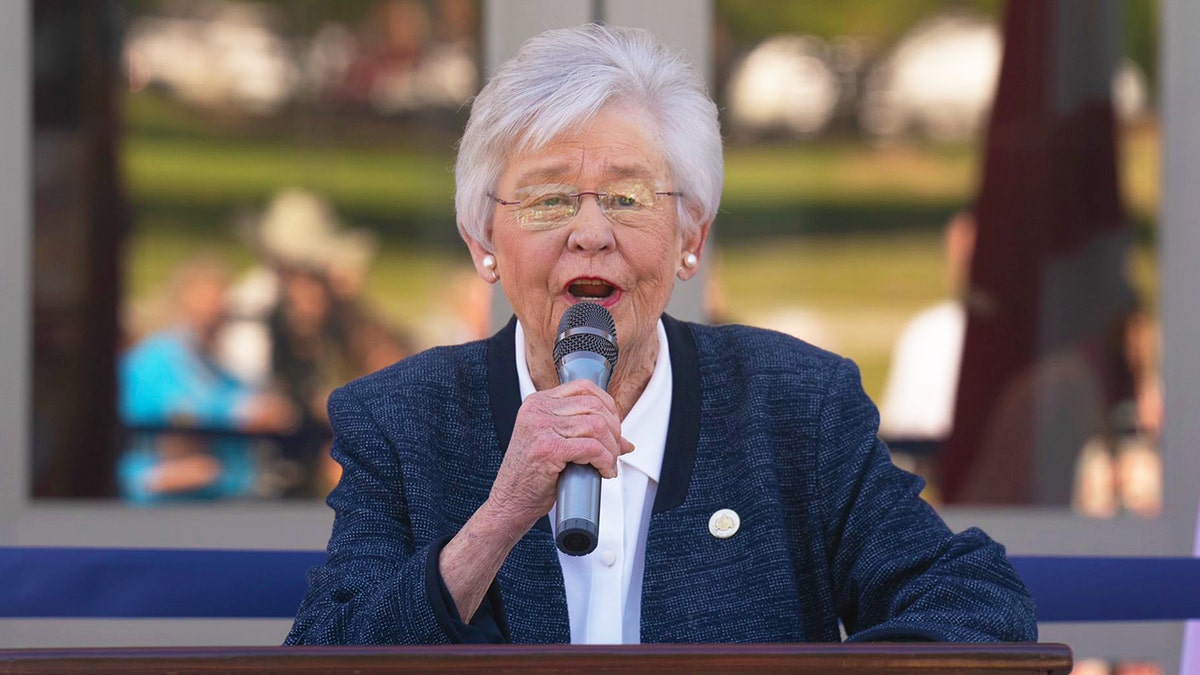
Alabama Gov. Kay Ivey signed into law a bill that strengthens the rights of homeowners against squatters who illegally occupy their property. (Governor Kay Ivey/X)
“It has been said that a person’s home is their castle, yet after a national rise in illegal occupations of homeowner’s private property, it is apparent that more must be done to halt criminals from commandeering people’s homes,” Ivey said in a statement.
“In Alabama, private property rights are paramount. This new law puts would-be squatters on notice that any attempt to hijack and take over someone’s home will be met with swift action by law enforcement. The best dwelling for an illegal squatter is a jail cell, and we in state government should never rest easy until all Alabama homeowners’ rights are fully protected.”
Read the full article from Here
-

 Politics1 week ago
Politics1 week agoPresident Biden had front row seat to dog, Commander, repeatedly biting Secret Service agents: report
-

 News1 week ago
News1 week ago171,000 Traveled for Abortions Last Year. See Where They Went.
-

 Politics1 week ago
Politics1 week agoTrump travels to DC to meet with congressional Republicans, speak with nation's top business executives
-

 News7 days ago
News7 days agoIt's easy to believe young voters could back Trump at young conservative conference
-

 World7 days ago
World7 days agoSwiss summit demands 'territorial integrity' of Ukraine
-

 Politics1 week ago
Politics1 week agoBiden’s ’pre-9/11 posture’ to blame for ISIS migrants slipping through cracks: expert
-

 World1 week ago
World1 week agoRussian warships in Cuba: Is it a port of call or show of strength?
-

 World1 week ago
World1 week agoElection aftermath – MEPs to watch on economic and financial policy













